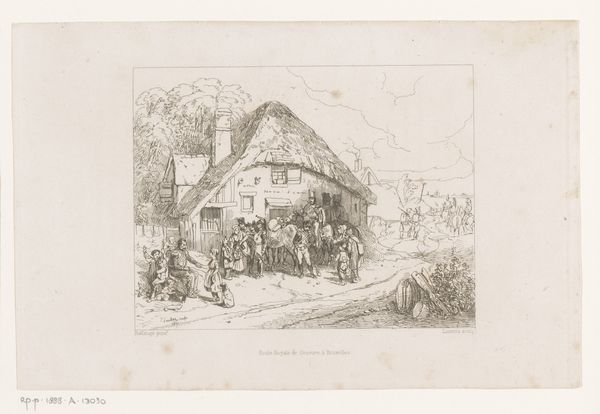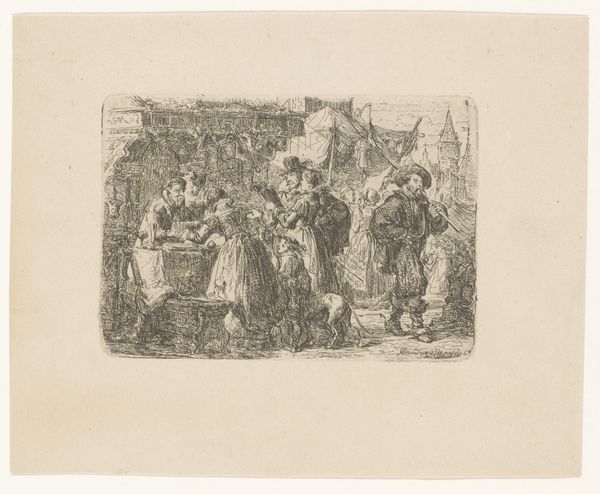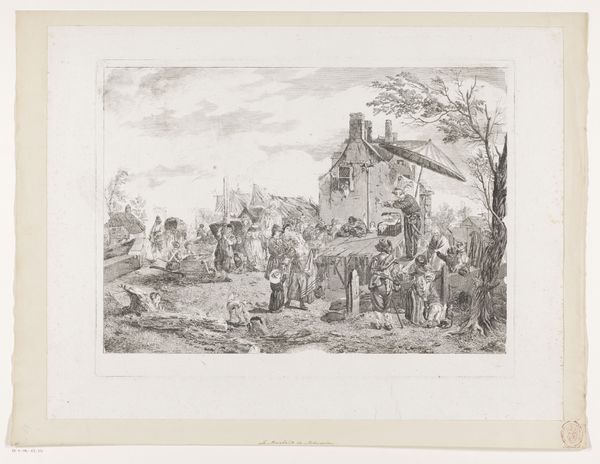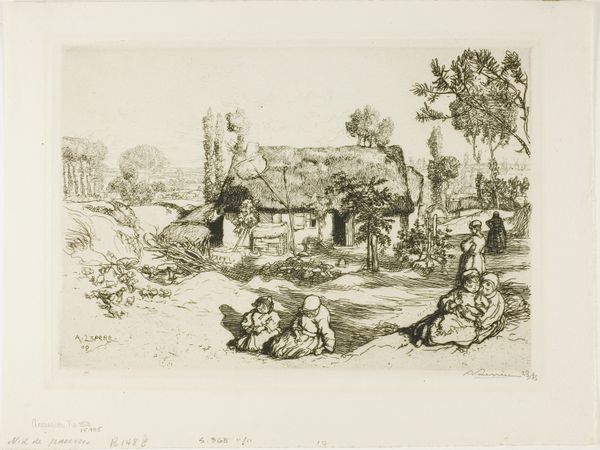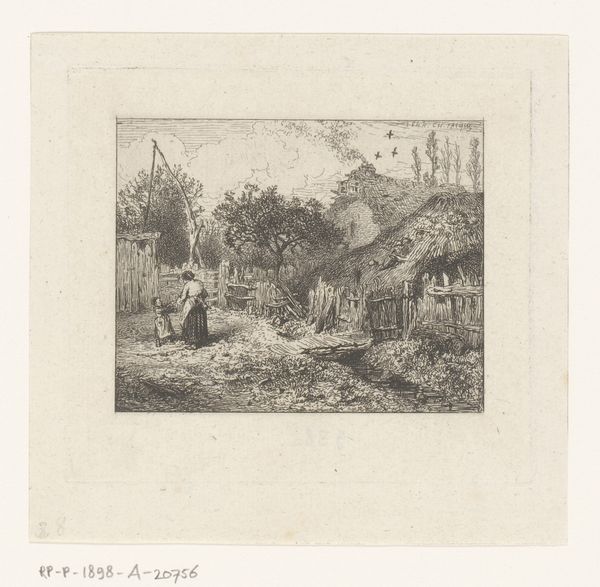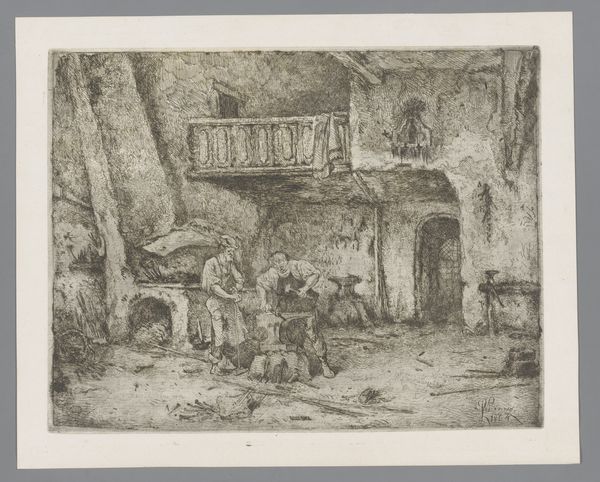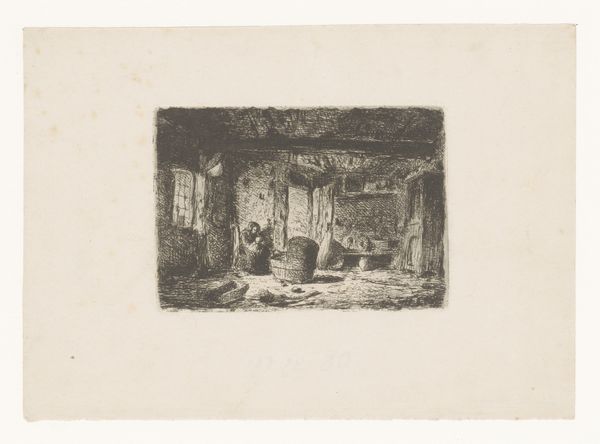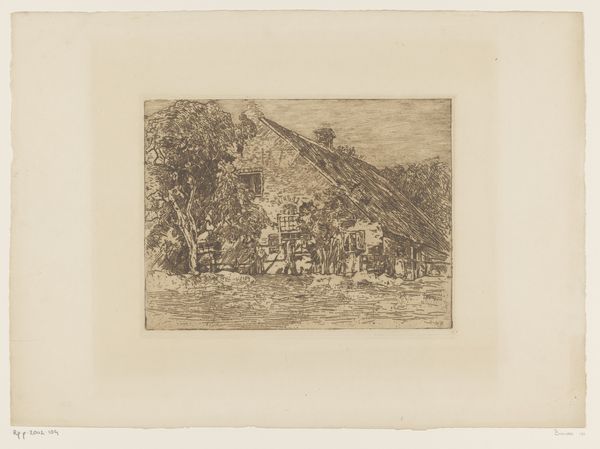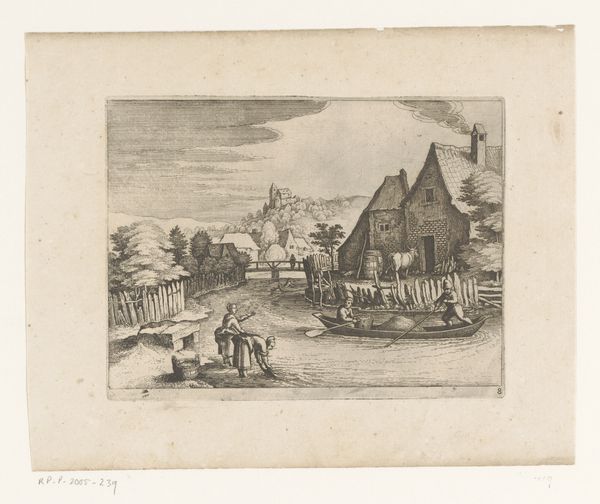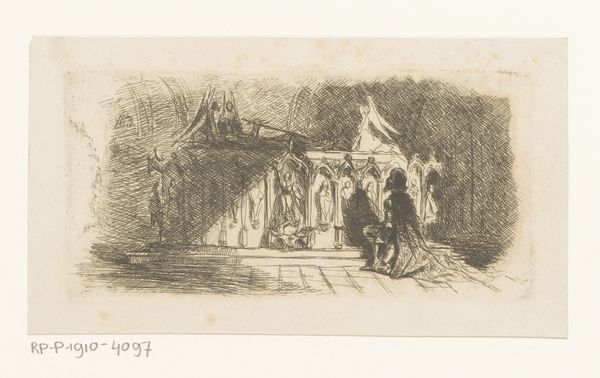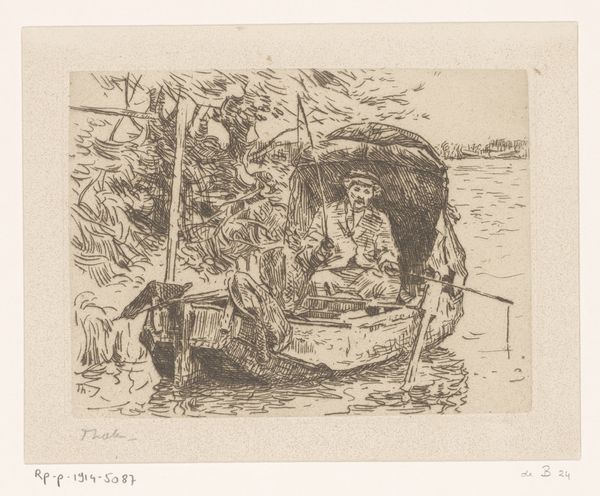
print, etching
#
narrative-art
# print
#
etching
#
landscape
#
romanticism
#
genre-painting
Dimensions: height 157 mm, width 209 mm
Copyright: Rijks Museum: Open Domain
Editor: This is "Kermis in de omgeving van Antwerpen," a print from 1836 by Paulus Lauters, housed here at the Rijksmuseum. It's an etching, a pretty detailed one at that. The whole scene gives off a very festive vibe, with lots of people dancing and drinking. What can you tell me about this work? Curator: It's fascinating to consider this kermis, or fair, as a microcosm of 19th-century Belgian society, specifically near Antwerp. How do you see the portrayal of class and gender roles within the scene? Notice how the print captures a sense of communal joy, yet through a contemporary lens, one might ask: who is truly represented and who is marginalized in this celebration? Editor: That's an interesting question. I see a lot of people, but it's hard to discern much beyond the suggestion of merriment. I suppose most seem to be dancing, eating, perhaps drinking - the scene does seem pretty gendered, actually, the women wearing more dresses and head coverings. Curator: Exactly. The “merry” genre scenes often conveniently overlook systemic issues and power dynamics in times of intense socio-political upheaval. Is it truly celebratory or does this image perform a kind of distracting, pacifying function for the populace? Also, consider that as a print, it has a life beyond just hanging in a gallery, right? Editor: Right, prints are easily reproducible. How does the nature of the print medium factor into it? Curator: Precisely! Prints democratize art to an extent. The Kermis, which in itself aims to unite through merriment, takes on a new layer of meaning and access when it exists as this accessible printed matter. Is it trying to reach certain audience, and why? And in terms of genre, we should acknowledge this as landscape work. The etching presents that genre to new class dynamics that begin to emerge during the mid-19th Century. Editor: I hadn't considered the reach of the work beyond just its artistic merit! That really frames my understanding of it now. Curator: And considering Romanticism's broader tendency, the artist may have also been attempting to establish and celebrate local culture and identities, at a time when industrialization threatened more local cultural traditions.
Comments
No comments
Be the first to comment and join the conversation on the ultimate creative platform.
